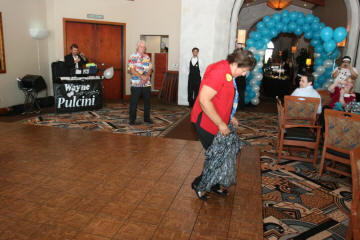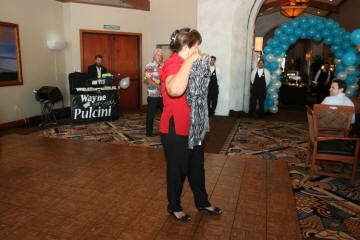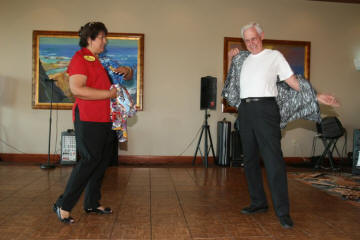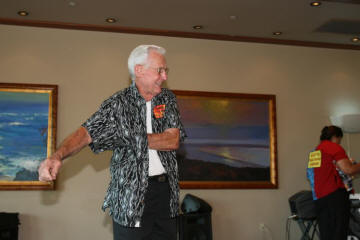Del's 85th Birthday (Page Two)

Vicky makes the rounds
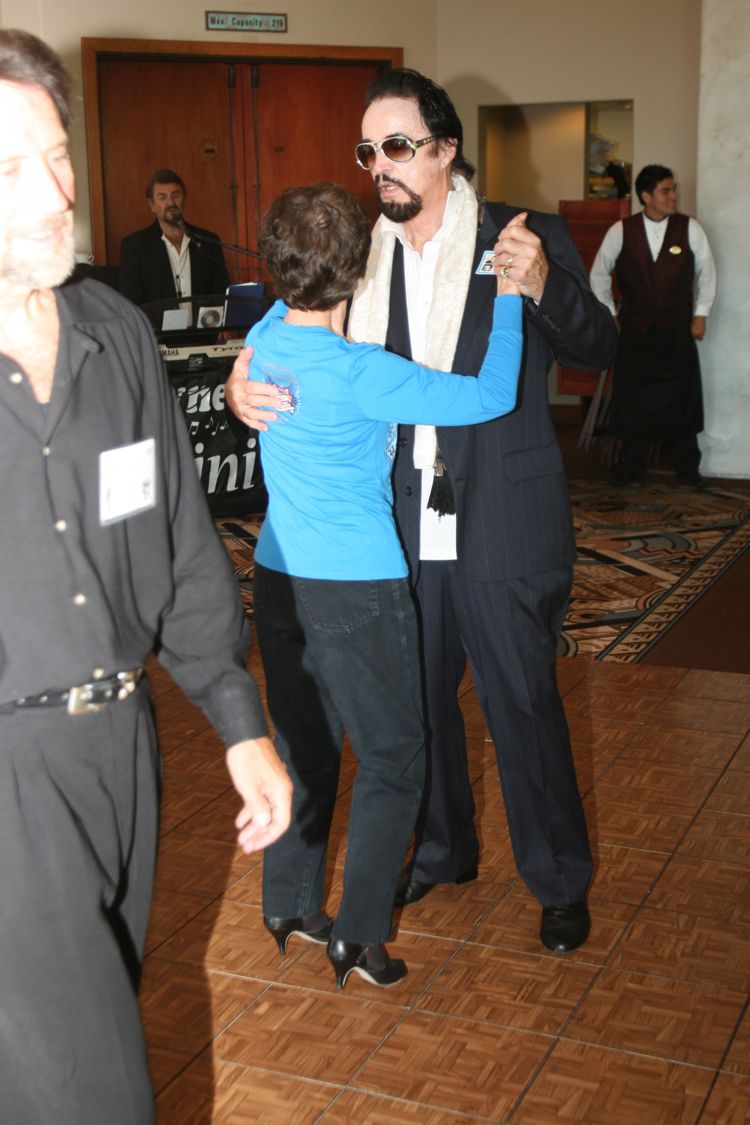
The dancing begins and Wayne Pulcini does a masterful job
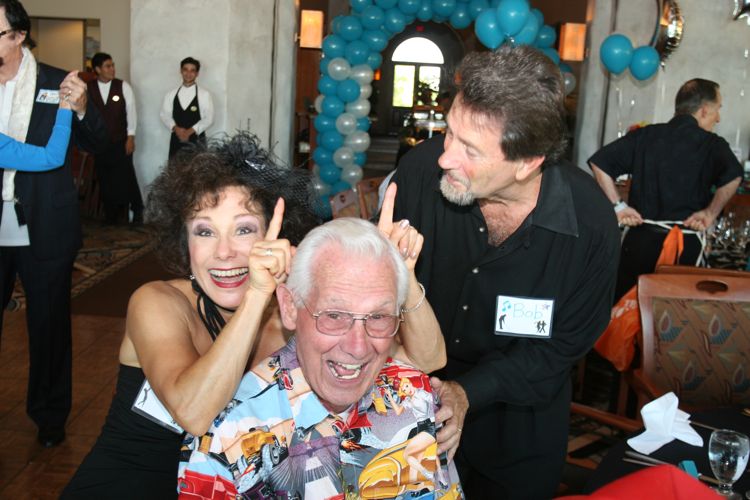
Attacked by Donna and Bob
A Change Of Clothes Is Needed For Del
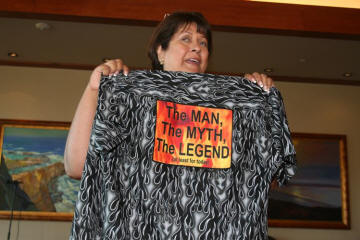

The story of the shirt unfolds

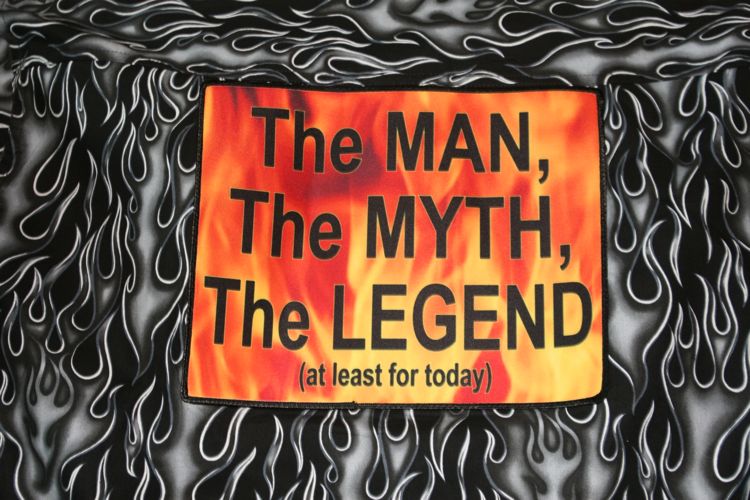
It's all true
Careful.... That thing has a nail in it!
Did you know? - A nail is a horn-like envelope covering the dorsal aspect of the terminal phalanges of fingers and toes in humans, most primates, and a few other mammals. Nails are similar to claws, which are found on numerous other animals. In common usage, the word nail often refers to the nail plate only. Fingernails and toenails are made of a tough protein called keratin, as are animals' hooves and horns. Along with hair they are an appendage of the skin.
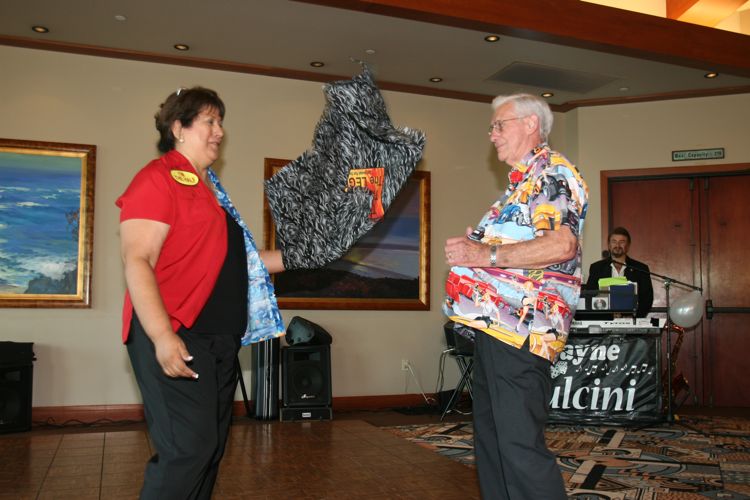
The Stripper goes into action
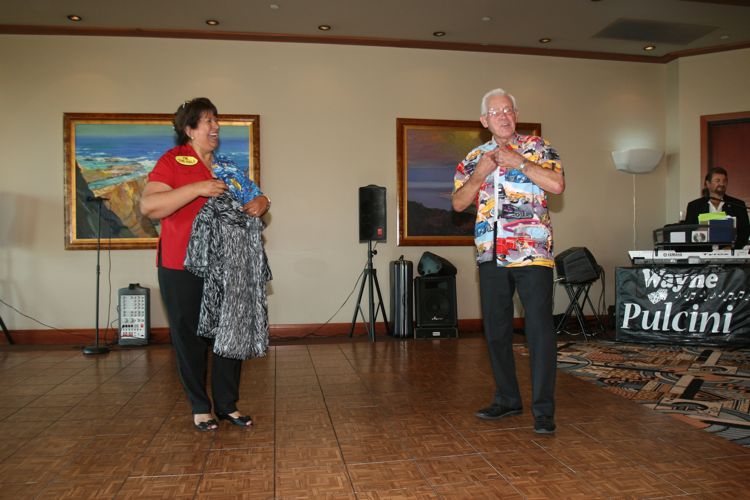
"So that's why all my T-shirts were in the wash yesterday!"
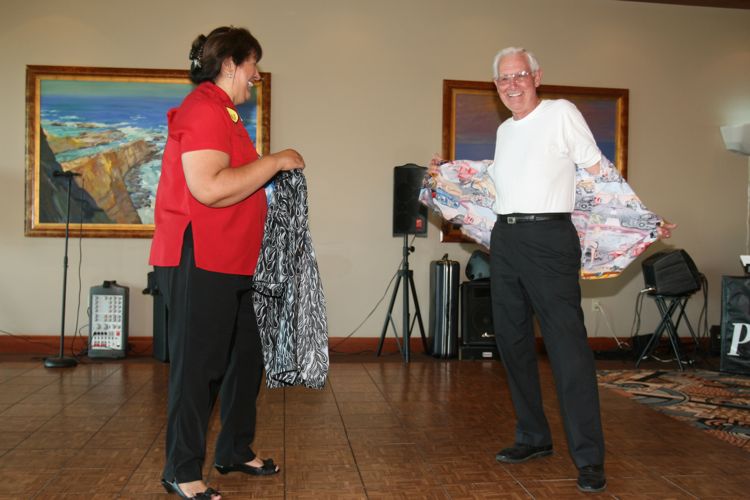
Ladies and children... Close your eyes!
Did you know? - A striptease is an erotic or exotic dance in which the performer gradually undresses, usually to music, either partly or completely, in a seductive and sexually suggestive manner. The person who performs a striptease is commonly known as a stripper or exotic dancer.
We all voted... This was NOT a striptease! Exotic? NO! Seductive? NO NO Sexual? ABSOLUTELY NOT!
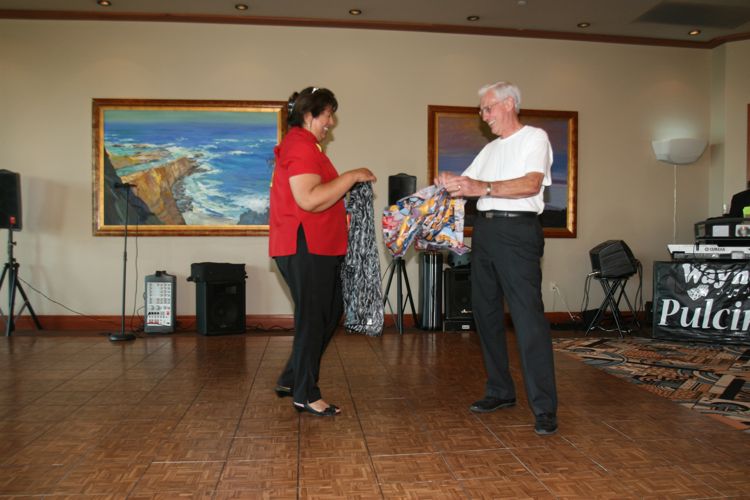
"Are they the same size?"
Did you know? - The modern Aloha shirt was devised in the early 1930s by Chinese merchant Ellery Chun of King-Smith Clothiers and Dry Goods, a store in Waikiki. Chun began sewing brightly colored shirts for tourists out of old kimono fabrics he had leftover in stock. The Honolulu Advertiser newspaper was quick to coin the term Aloha shirt to describe Chun's fashionable creation. Chun trademarked the name. The first advertisement in the Honolulu Advertiser for Chun's Aloha shirt was published on June 28, 1935. Local residents, especially surfers, and tourists descended on Chun's store and bought every shirt he had. Within years, major designer labels sprung up all over Hawaii and began manufacturing and selling Aloha shirts en masse.
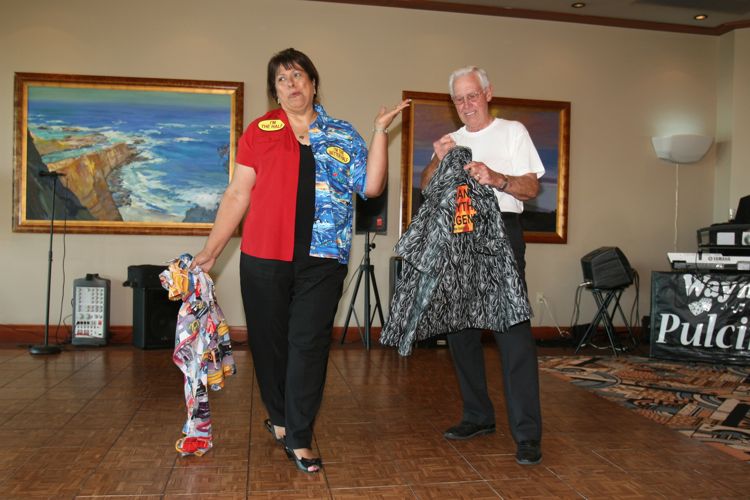
"See! I can get him to do anything!!"
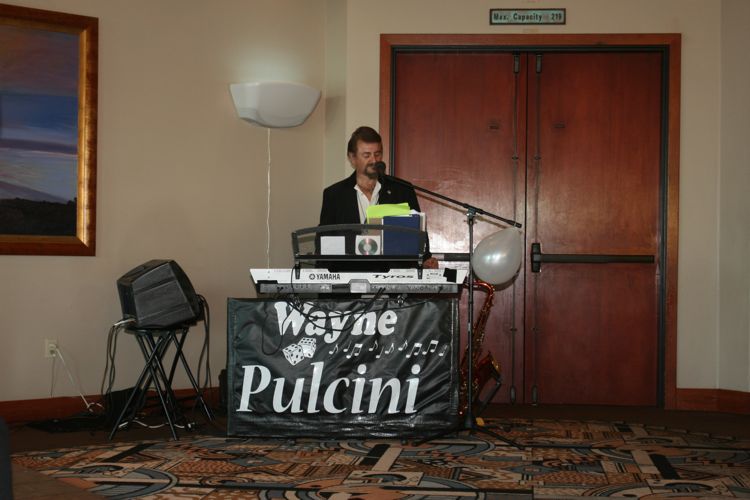
"Oh oh... What should I play now"
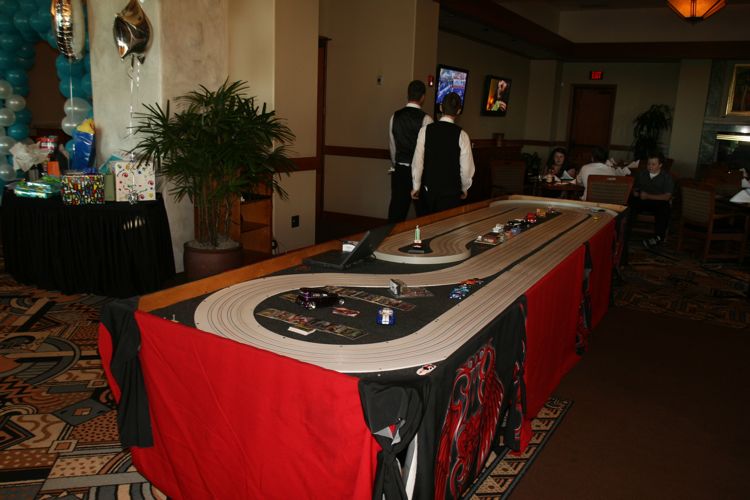
We know where the kids are!
Did you know? - The first commercial slot cars were made by Lionel (USA) and appeared in their catalogues from 1912, drawing power from a toy train rail sunk in a trough or wide slot between the rails.
They were surprisingly similar to modern slot cars, but independent speed control was available only as an optional extra. Production was discontinued after 1915. Sporadically over the next forty years, several other electrically powered commercial products came and went.
Although a patent was registered as far back as March 1936 for a slot car, until the late 1950s, nearly all powered toy vehicles were guided by raised rails, either at the wheels (railroad-style), or at the lane center, or edge.
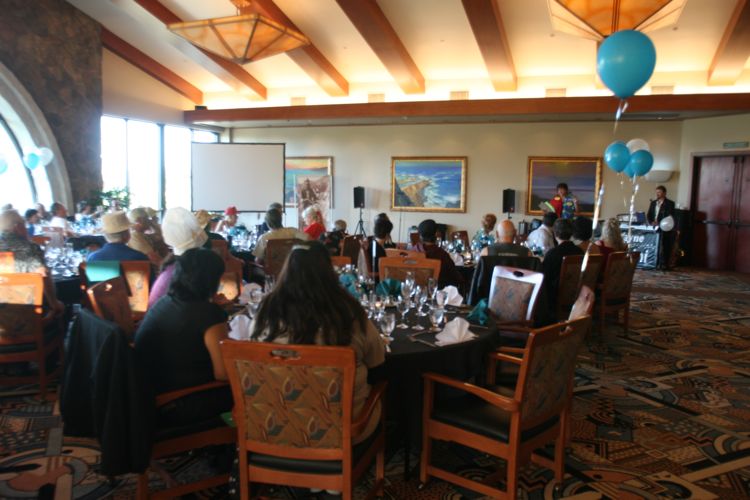
Oh oh... What's going on now??
Poor Del, He's In For It Now Because She Has The Mike

The crowd roars
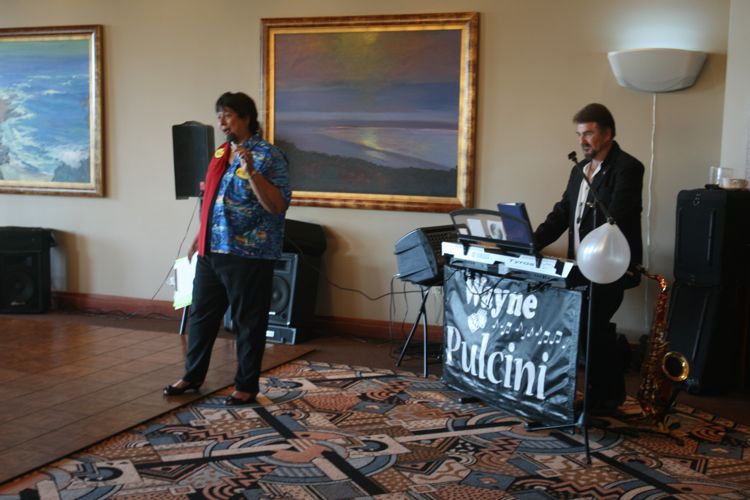
"We are all gathered together here..."

The stadium is full
"Hey... My Dad is a good speaker!" 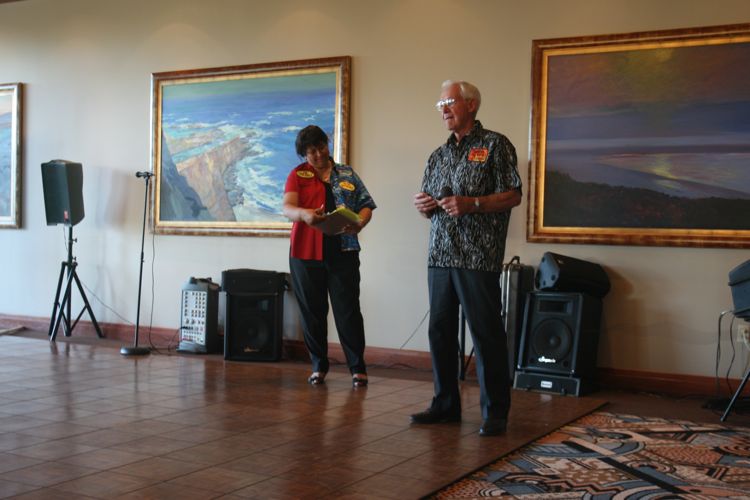
A few prepared words
Did you know? - An index card (or System card in Australian English) consists of heavy paper stock cut to a standard size, used for recording and storing small amounts of discrete data. It was invented by Carl Linnaeus.
The most common size for index cards in North America and Russia is 3 by 5 inches (76.2 by 127.0 mm), hence the common name 3-by-5 card. Other sizes widely available include 4 by 6 inches (101.6 by 152.4 mm), 5 by 8 inches (127.0 by 203.2 mm) and ISO-size A7 (74 by 105 mm/2.9 by 4.1 in). Cards are available in blank, ruled and grid styles in a variety of colors. Special divider cards with protruding tabs and a variety of cases and trays to hold the cards are also sold by stationers and office product companies.
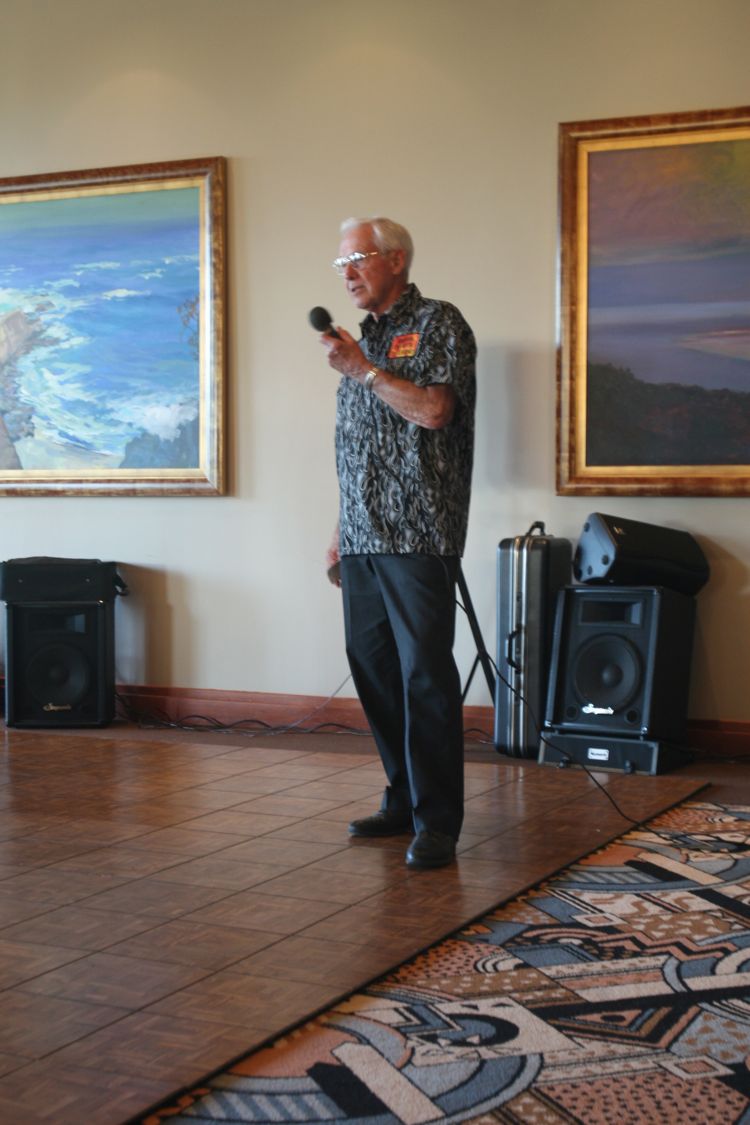
A man of few words
Did you know? - A "man" of few words...Someone, not necessarily a man, who speaks concisely or not at all. He is a man of few words, but he usually makes a lot of sense.

Applause rings out over the crowd
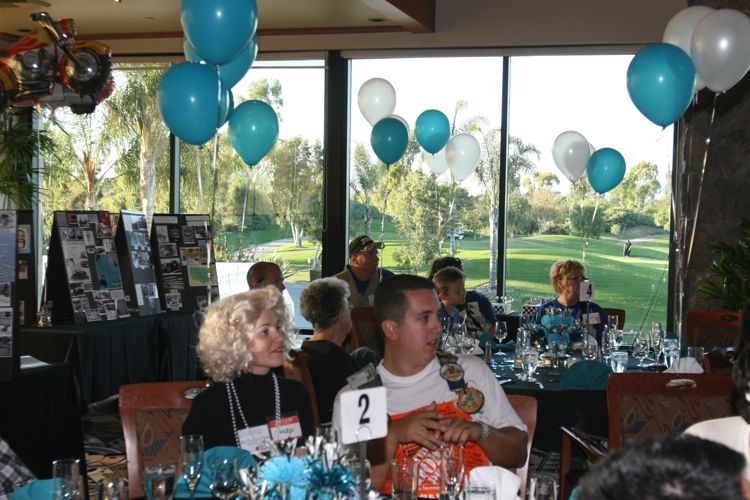
Hey... Dad is a good speaker!"
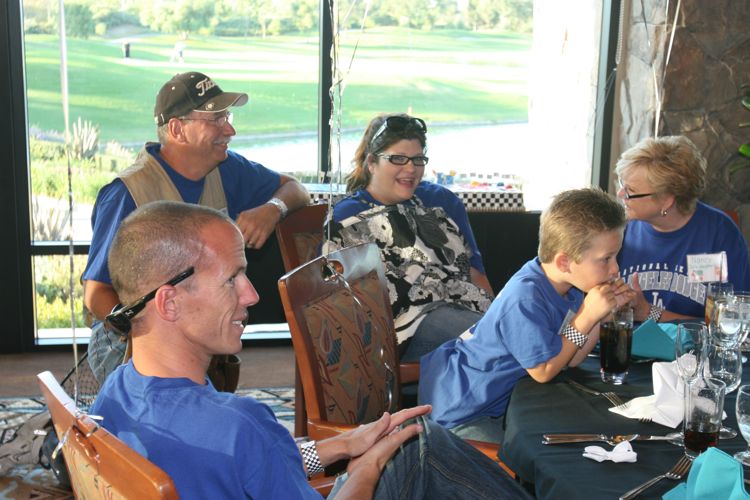
"Hey, Grandpa/Great Grandpa is doing good!!"
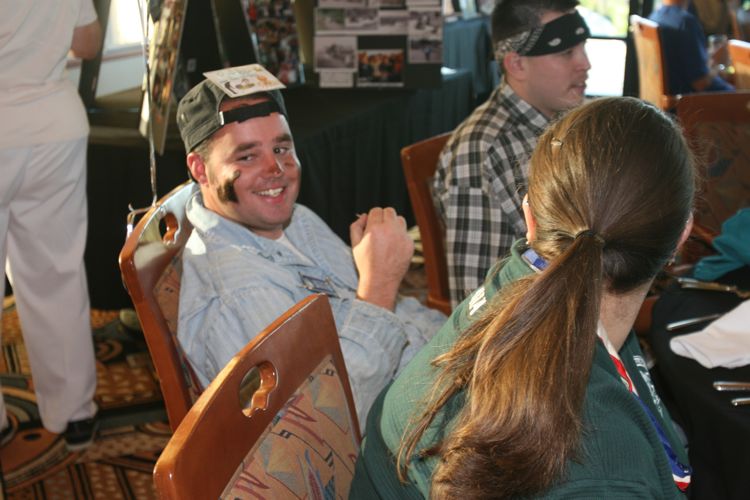
"Yes! It is real grease"

Mitzi likes the party...

Nancy enjoys the activities

Gladys keeps an eye on things

Neighbors Bobbi and Bill

Neighbors Stacey and Donny
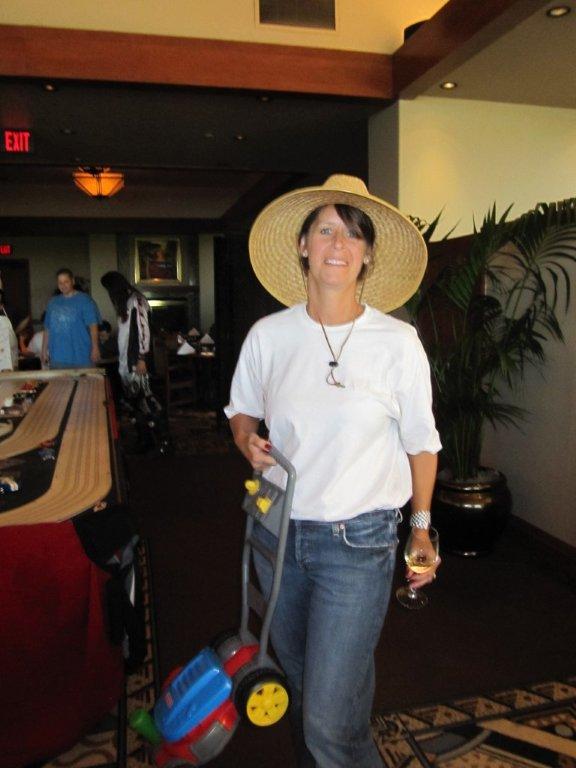
Del mows his own lawn... Stacey want
Did you know? - The first lawn mower was invented by Edwin Budding in 1827 in Thrupp, just outside Stroud, in Gloucestershire. Budding's mower was designed primarily to cut the lawn on sports grounds and expensive gardens, as a superior alternative to the scythe, and was patented in 1830.
It took ten more years and further innovations to create a machine that could be worked by animals, and sixty years before a steam-powered lawn mower was built. In an agreement between John Ferrabee and Edwin Budding dated May 18, 1830, Ferrabee paid the costs of development, obtained letters of patent and acquired rights to manufacture, sell and license other manufacturers in the production of lawn mowers.
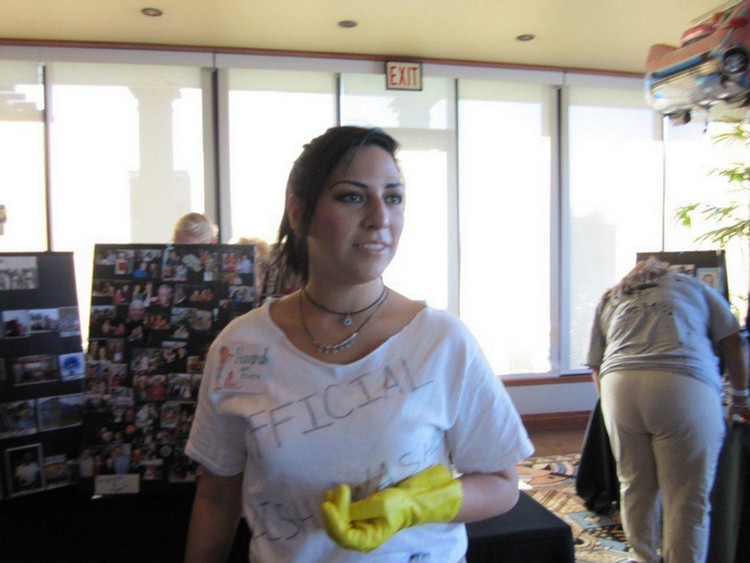
Havana washes the dishes
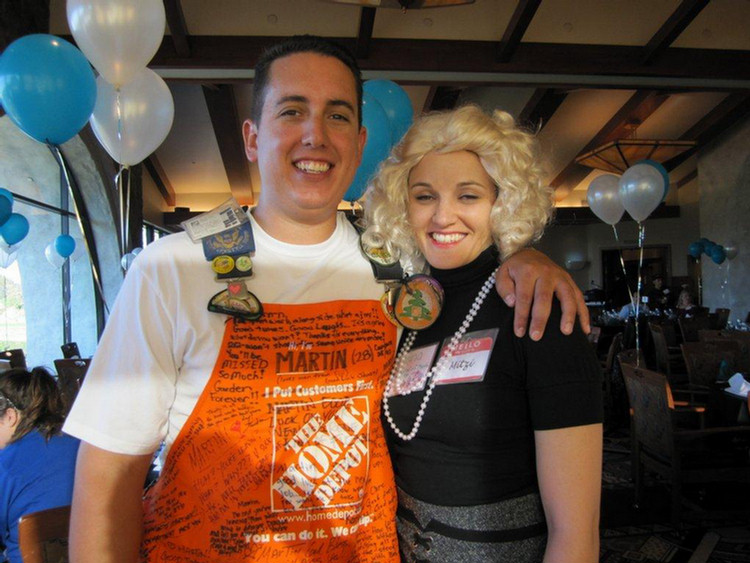
"Do it yourself!!"
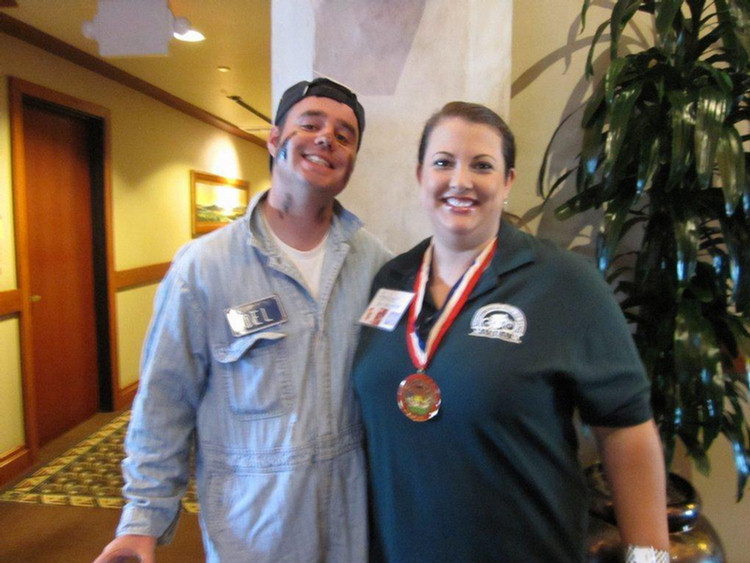
"I can fix anything"... as long as daddy Del is around

Wisconsin Sue makes sure everybody has a ticket

Vince and Nancy will dance all evening
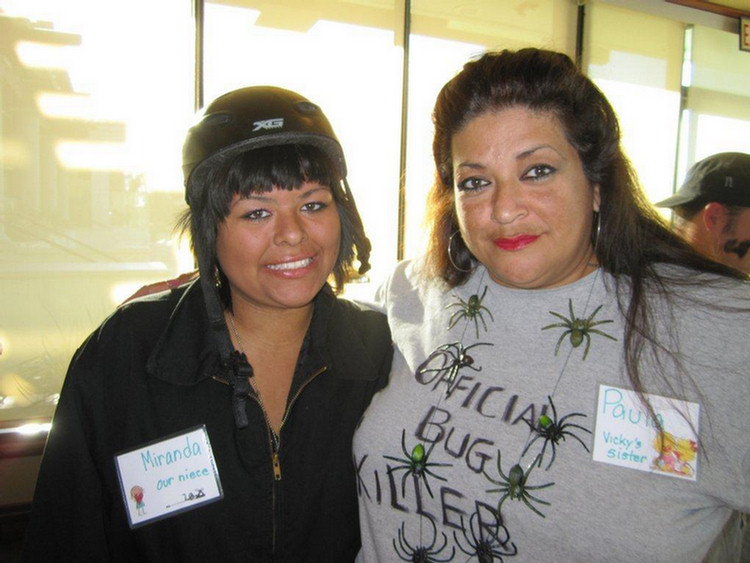
Bike rider and bug catcher.;.. Gee, aren't they sometimes the same???
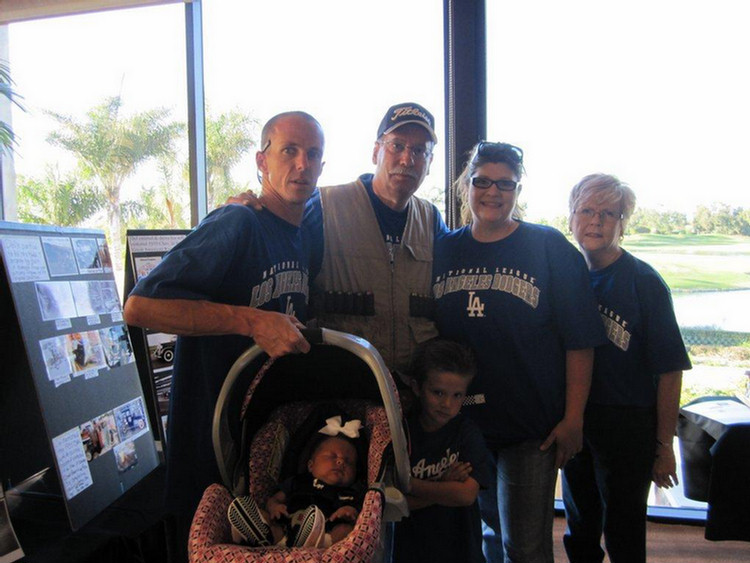
Kurt and family
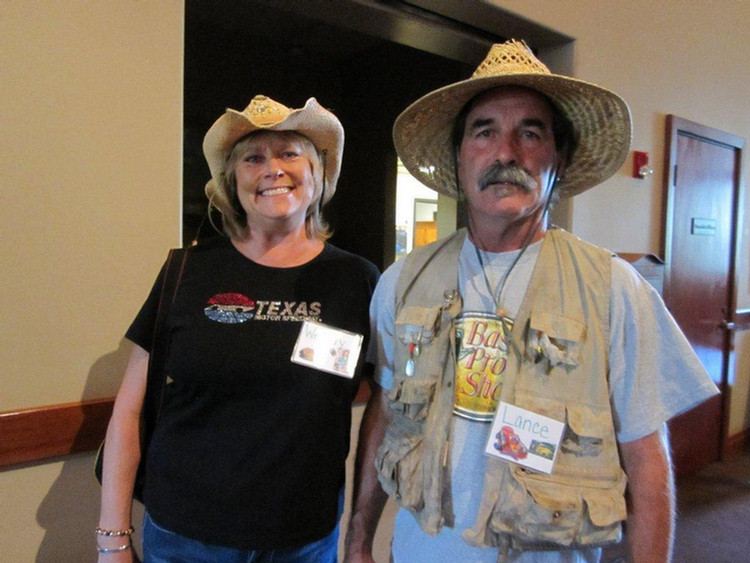
Wendy and Lance

Kirstin & Glenn

Robbie tries to assist Sue
Did you know? - The first toothpick-manufacturing machine was developed in 1869, by Charles Forster. Another was patented in 1872, by Silas Noble and J. P. Cooley.
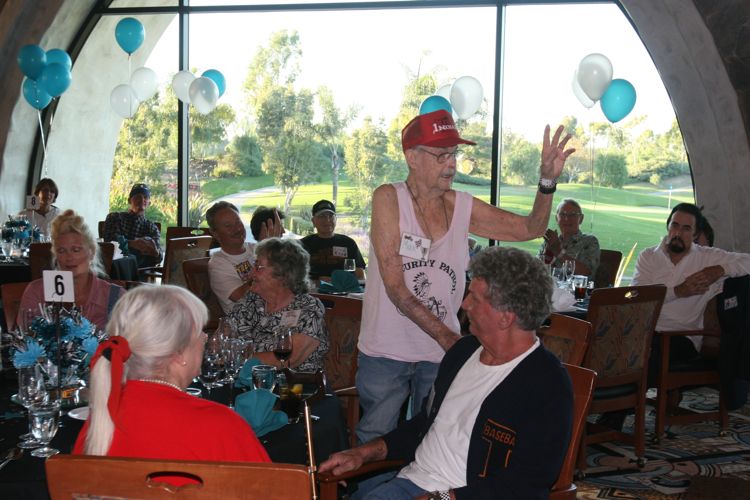
93 and going strong
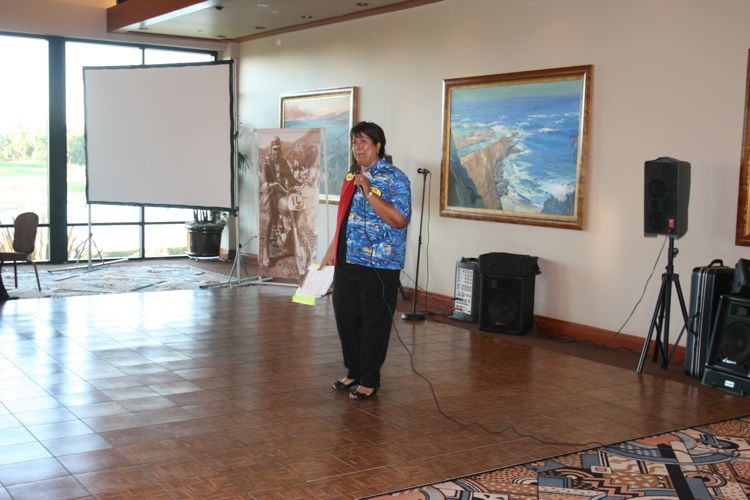
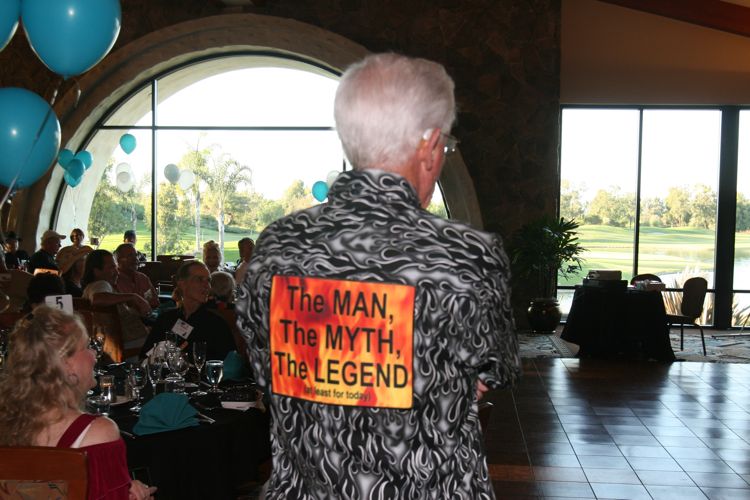
Great shirt for a great man
Did you know? - The term mythology can refer to either the study of myths, or to a body of myths. The term "myth" is often used colloquially to refer to a false story, but academic use of the term generally does not pass judgment on truth or falsity. The main characters in myths are usually gods or supernatural heroes.

He hit the jackpot!

Sue was great help the entire evening

Marcia and Leon
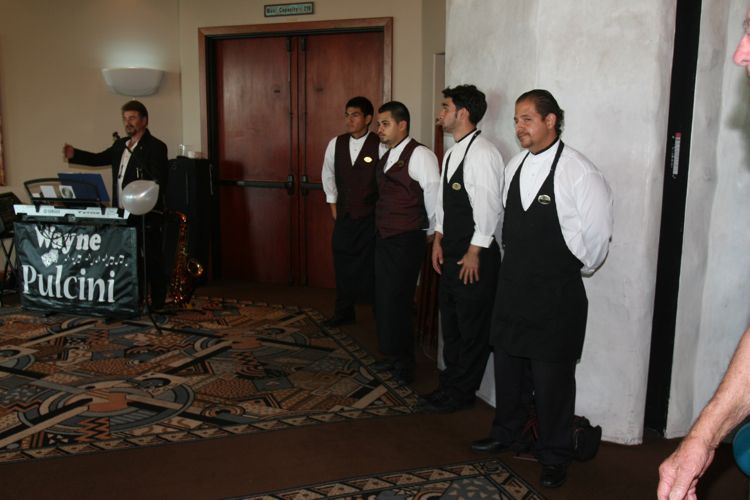
The staff was very attentive to the party goers

Del stands next to the entrance because he knows that.... Dinner is next

Kathie & Daughter

Kathie & Glenn
Did you know? - Bobby soxer is a 1940s sociologic coinage denoting the over zealous, usually teenage girls, fans of singer Frank Sinatra, the first singing teen idol; by the 1950s, fashionable adolescent girls wore poodle skirts and rolled down their socks to the ankle. In high schools, the gymnasium often was used as a dance floor, however, since street shoes and street detritus might damage the polished wood floors, the students were required to remove their shoes and dance in their bobby socks, thus the phrase 'sock hop'.
The adolescent actress Shirley Temple portrayed said type of impressionable adolescent girl in the film, The Bachelor and the Bobby-Soxer (1947).

Bob & Donna
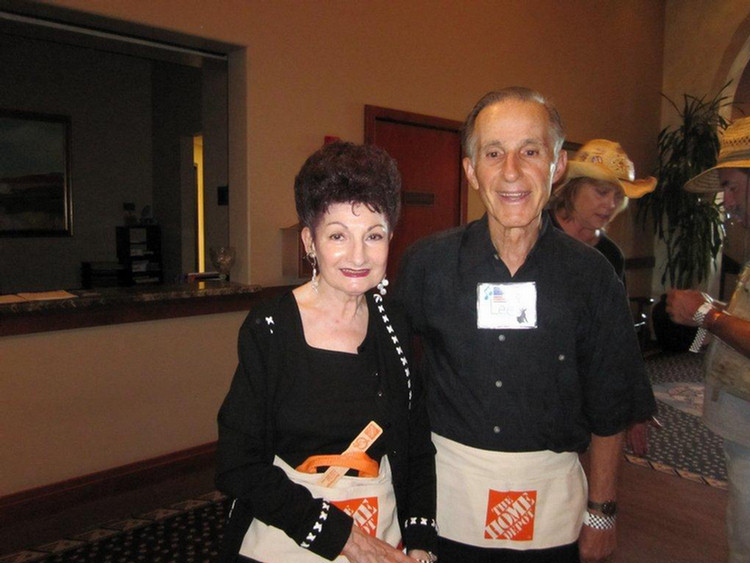
Marcia & Leon

Sam & Brenda
Quick Flash Back
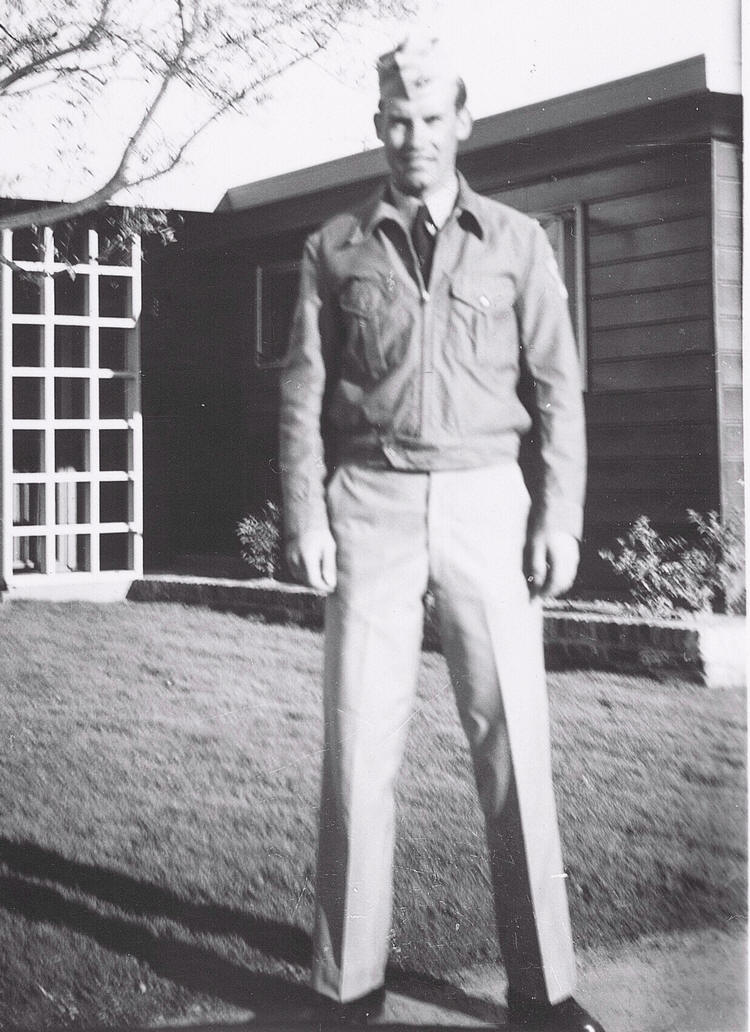
Cadet Del

Officer Del
